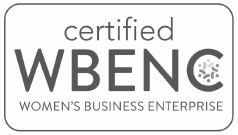In the content marketing era, there is no shortage of great information to consume online.
While this provides Web-surfing audiences with a plethora of details on everything from how to find the right case for your iPad to how to screen an accounting firm, it also raises the bar on the caliber of content that will actually reach prospective clients/customers.
When you develop Web-based content to market your business or nonprofit, consider these 10 characteristics of great online marketing content:
1. Visual
Pinterest is the fourth-largest traffic driver in the world, and Instagram’s weekly site visits recently hit 12 million, up from 56,360 in 2011. People are thinking visually.
How can your small business or nonprofit develop visual content that resonates with prospects and further engages current clients? Think infographics, behind-the-scenes photos, and relevant workplace snapshots.
2. Shareable
The beauty of online marketing content and the explosive growth of social media is that people can easily share information with their clients, colleagues, friends and family. In many ways, this makes content sharing the online equivalent of word-of-mouth marketing—or should we say “word-of-mouse”?
Businesses, nonprofits and individuals need to include share buttons on their blogs and other relevant online content so interested audiences can share the information they find remarkable with other like-minded consumers.
3. Timely
It is a lot easier to sell an automatic car starter in the middle of a chilly, snowy winter than it is on a warm and sunny summer day. Look for opportunities to tie your content in with timely trends—holiday shopping, tax season, hunger action month, etc.—to increase people’s receptivity to the information you provide.
4. Relevant
In addition to being timely, great content needs to be relevant to an organization’s target buyer persona(s). Understanding what makes clients tick and what ultimately convinces them to donate or buy is key to creating content that moves the needle. Develop content that is timely and relevant for optimal success.
5. Unique
With many organizations keeping their antennae up for timely marketing opportunities, the importance of giving your content a unique twist cannot be understated. Give people content that is worth consuming and sharing. Develop content that sets itself apart from the competition and clearly demonstrates the organization’s unique value proposition.
6. Fun
It sounds a bit absurd when you think about more serious topics (such as the dreaded audit), but when you execute it correctly, marketing that is fun can make a big splash.
It’s been a few years since Approva unveiled its “I Love a Good Audit” campaign, but it remains a great example of how to make a dreaded topic more appealing to the target audience.
From handing out “I love a good audit” buttons at tradeshows to developing YouTube videos featuring The Singing CPA, Approva nailed it. It provided relevant and engaging content on an unsavory topic that was approachable and fun. I give Approva an A+.
7. Emotional
What makes a nonprofit’s annual appeal letter effective? Copy that evokes a connection between the reader and the organization. The same can be said for online content.
Be it laughing, crying, smiling, smirking or shaking their heads, you want people to react to your content. It’s part of what makes it memorable. Look for ways to evoke an appropriate emotional response from your target audiences to strengthen their connection to both your content and your brand.
8. Actionable
Following the rationale behind a nonprofit annual appeal letter, the goal is to have members of your target audience take action beyond simply consuming your content.
For example, your nonprofit may have recently written an eloquent blog post featuring a client success story. While sharing news of the great work your organization does within the community is important, equally important is providing those who are compelled to support your cause after reading the post with an opportunity to do so.
Something as simple as including a link to a donation page can make blog posts more actionable. You should apply this principle to all marketing content, from trade show displays to online advertising.
9. Interactive
The rise of gamification is singlehandedly making the case for interactive online marketing content. While it may not be the best use of your resources to create the next Angry Birds, there are ways to apply gaming and reward principles to online content and further engage your audiences.
10. Credible
Attribution is key to building an online community. If you share a great statistic, acknowledge not only the source of the data, but the person or organization from whom you obtained it. Whether the research is third-party or proprietary, good data is important to developing credible online content.
Content marketing is a powerful way for small businesses and non-profits get found online and attract qualified leads. Before you commit to developing a high volume of content, commit to developing high-quality content.
While Google is concerned about how often you update your website and the length of your blog posts, prospective clients are concerned about the depth of expertise you share and how your content is relevant to them and/or their businesses.
Danielle M. Cyr is director of social media for Co-Communications. Follow her on Twitter @DanielleCyr.

